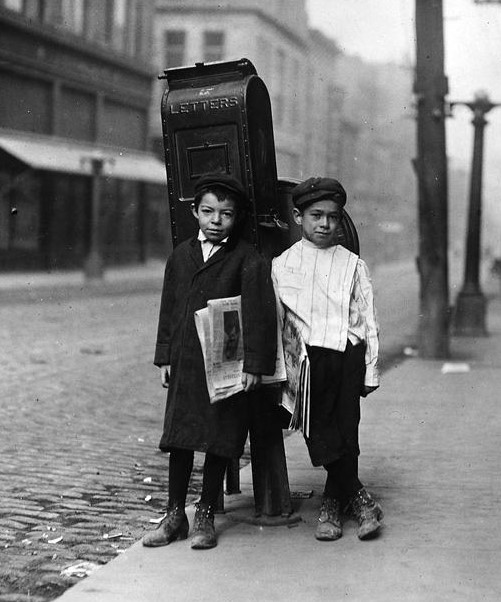Everyone (at least everyone in the MIT SCM master’s program) knows how the newsvendor problem works. The problem itself is pretty straight forward: you must choose your inventory level before you know that day’s demand. If you don’t produce enough newspapers to meet demand, you sacrifice profits to lost sales. If you produce too many newspapers, you sacrifice profits to the cost of unsellable supply. Even though the problem is straight forward, it is not relatable to most people. Let me give you a slightly different perspective on this common supply chain conundrum.
What if you weren’t concerned with maximizing profits for the local newspaper publisher? What if you were more worried about standing out in the cold with no newspapers to sell? Some of you may have to take my word for this, but back in the day, people used to buy and read physical newspapers. This was in the time before Google and cable TV was only for big city folk. Many people even bought both a morning and afternoon paper. It could be delivered by a boy on a bicycle, or a reader could go down to the street and buy a newspaper while they ran an errand.

Here’s where it gets wild: children used to actually stand on street corners or in front of the local grocery store selling newspapers. Unlike the noble activity of selling Girl Scout cookies, this was a job for making money and the work was tough. In the summer it was hot. In the winter it was cold. On Sunday you to started working at dawn. Why? Because that is when people bought newspapers on Sunday mornings. As an industrious 12-year-old, you made $0.25 for each newspaper you could sell plus any tips. You had no costs other than your time (which as you have surely noted was not highly valued). The publisher produced all of the newspapers and bore all of the costs. They also received all of the proceeds of the sales minus the $0.25 that was paid to the industrious 12-year-old. Now here is the dilemma: the publishers also decided how many newspapers each industrious 12-year-old would have available to sell.
The goal of each motivated 12-year-old newsvendor is to sell all his papers. And even a 12-year-old knows you cannot sell newspapers you don’t have. You also can’t make tips on newspapers you don’t sell. In case you were wondering, it’s not a lot of fun to stand around with no newspapers when it is hot/cold/early. So how does a 12-year-old solve the newsvendor problem? The answer is obvious: increase supply!
In this particular case, said 12-year-old did not have a direct line to management at the newspaper and his input on demand forecasting was mysteriously not solicited. Having yet to complete his MIT SCx courses in Supply Chain, his input might not have been very good anyways. However, said 12-year-old did have time and a pocketful of quarters. If the newspaper would not provide the appropriate supply, it would be procured from secondary sources. After a review of his options and recognizing that he had not signed a non-compete agreement, the 12-year-old procured the necessary supply from the near-by machines which held competing newspapers. It turns out that people don’t pay attention to which paper they are buying anyways. Perhaps not a textbook solution, but the 12-year-old thought it worked pretty well, marking just the first in a lifelong career of imaginative and inventive supply chain solutions!

